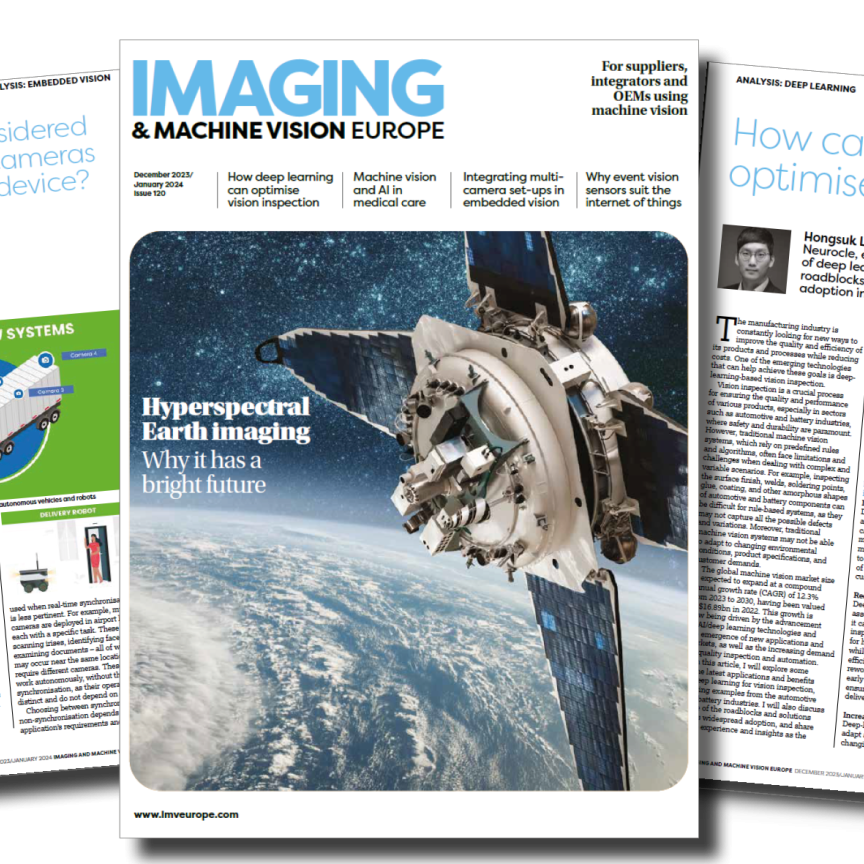The new sensor modules in the FRAMOS ecosystem now also support the Sony IMX283 CMOS sensor, extending the present resolution range to 20 Megapixels. The module for the new Sony IMX415 (8.4 Megapixels) also gives users the opportunity to benefit from a completely new pixel design and the best low-light performance currently available in this format. The modules with the IMX296 and IMX297 global shutter sensors now offer colour support in addition to monochrome. Modules with the AR0144 (1 Megapixel, Global Shutter) and AR1335 (13 Megapixels, Rolling Shutter) from ON Semiconductor expand the portfolio with compact sensors for price-sensitive applications.
New modules for selected popular sensors
With its modular solution, FRAMOS solves the problem that almost all evaluation boards for the latest sensors are proprietary and focus on bare sensor hands-on – without the application. Vision engineers and developers can use the product ecosystem to evaluate many different of the latest image sensors on open processor platforms, quickly create a proof-of-concept, and then systematically advance it by integrating the IP, circuit diagrams and board design into their own product. At the same time, they are relieving their own development and production capacities with the expanded product range.
For all new sensor modules, FRAMOS offers corresponding sensor and processor adapters (FSA, FPA), drivers and reference circuit diagrams. The FSA adapters transmit the sensor data via a standardised FRAMOS connector to a signal interface for transmission to the processor board. The module dimensions are 26.5 x 26.5 mm, with a Hirose 60-pin connector and four holes for mounting on the underside. The FSA sensor adapters are connected to the processor board via a FRAMOS processor adapter FPA.
Support of multi-sensor systems for 3D
With the new sensor modules, for which M12 and C/CS lens mounts are also available, and with the multi-sensor platform, which supports setup with up to four sensor modules (previously only one module was possible), FRAMOS considerably expands the application possibilities of its embedded vision product ecosystem, for example in stereoscopy or the fusion of multiple image sensors on one system (stitching). This benefits equipment manufacturers and start-ups who want to equip their products with "eyes" and teach them (3D) vision in the fields of autonomous systems, drone and surveillance technology, AR/VR systems, biometrics, robotics and logistics.
Commenting on this, André Brela, Product Manager at FRAMOS, said: “With the new solutions, we support system developers in qualifying and integrating the image sensors necessary for their application faster and in procuring the entire image sensor subsystem from a single source. Our range of modules is based on a very flexible platform that offers functionality to evaluate not only the sensor but also its performance directly in the specific customer application. With our modular approach, we offer developers a way to accelerate time-to-market and focus resources on their own innovative strength.”
Successful introduction of the embedded vision product ecosystem
Key technology drivers for embedded vision in many markets include miniaturisation and the tremendous capabilities offered today by processors, artificial intelligence and 3D data acquisition. Last year, FRAMOS presented its embedded vision product ecosystem for the first time with great success at the VISION trade fair in Stuttgart. From the selection of individual components to the design of complex image processing systems, FRAMOS, also thanks to its strong partner network, serves its customers worldwide with a wide range of products and modular platforms. Embedded vision applications can thus be quickly developed to bring innovative products to market in less time.

